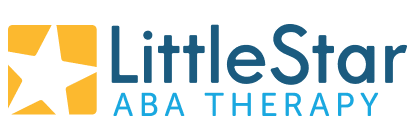EEG Test in Young Children Offers Hope as Potential Diagnostic Tool for Autism
There has been much international attention on the recent publication in BMC Medicine of a study by Harvard University and Children’s Hospital Boston on EEG testing in young children as young as two years of age. The study aimed to identify factors that separate children with autism spectrum disorder (ASD) from those without. One such article in ScienceDaily (June 25, 2012) summarizes the research conducted by Dr. Frank H. Duffy, Dept. of Neurology, and Heidelise Als, PhD., Dept. of Psychiatry, both at Boston Children’s Hospital.
The results revealed that children with autism exhibit consistent EEG patterns indicating altered connectivity between brain regions, “generally, reduced connectivity as compared with controls.” In the ScienceDaily article, Dr. Duffy was quoted, “We studied the typical autistic child seeing a behavioral specialist — children who typically don’t cooperate well with EEGs and are very hard to study. No one has extensively studied large samples of these children with EEGs, in part because of the difficulty of getting reliable EEG recordings from them.”
The study offers hope that EEG may provide a diagnostic test for the disorder on several levels, including early diagnosis which would enable children to begin therapy right away. In addition, it may help determine if Asperger’s should be considered a separate condition; indicate whether or not siblings of children with ASD may develop the same disorder; and track the effect of different types of autism treatment on the condition.
“We at Little Star Center want to start applied behavior analysis (ABA) therapy as early as possible. We are really excited about the possibility of individuals being diagnosed as early as 18 months of age,” said Tim Courtney, Little Star Center Research & Training Director. “Little Star has had one learner undergo an EEG scan already to help us evaluate behavioral strategies to get kids to comply with EEG, and begin evaluating the effectiveness of ABA at changing the structure of the brain. We hope to get more done moving forward as EEG diagnosis has an 80% accuracy rate. In practice, we’d like to have the test done before a learner begins ABA training then scan a year later to determine the value of ABA. The child we scanned had already been receiving ABA training; so, we can’t do the type of comparison we ideally want in that case. However, the doctor with whom we are working (Dr. Jane Yip) believes she saw ABA greatly helping the child.”
Dr. Jane Yip, PhD. is familiar with this study and is conducting more EEG’s in young children. She noted that they are finding that “coherence” is affected in autism. “Brain activity as a whole is functioning in a different way (in individuals with autism) from the neurotypicals (normals),” she said. “It’s like a person who has broken a leg will limp and the entire gait will be affected no matter which angle you choose to look at it from. This is a new frontier. It will be beneficial to further development of autism research to have data showing pre- and post changes of (brain) profiles and look for the biomarker that is most sensitive to treatment. Better visualization of results, both in behavior and brain performance, will help the children improve in a way previously undreamt of. The test is confirming to parents that ABA intervention can produce rewiring in the brain.”
